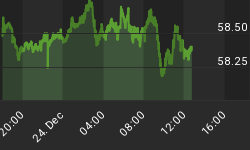With the price of crude oil now down over 30% from its August high of nearly $80 per barrel, many have concluded that the bull market is over. While the recent decline is somewhat steeper than the five 20% -30% corrections experienced since 2001 (when the current bull market in oil began), I feel that this pullback no more signals the arrival of a bear market than any of those previous dips.
While the current pullback may be more substantial and longer lasting than prior corrections, the long-term up trend remains intact. In fact, a drop to around $47 would put the market right onto its long-term trend line. While the momentum may well cause oil prices to test this trend-line, I’m convinced that it will hold.
Remember, more so than at any other time in the past, short-term market movements are being driven by the more than 9,000 hedge funds, many of which have highly leveraged positions in the oil markets. Clearly many momentum players are closing their long position, while others are initiating new short positions. This type of speculative trading exaggerates the severity of corrections, but is also sows the seeds for an equally dramatic rally.
Leverage is a two-edged sword. When real physical demand finally turns the market, those shorting into this decline will be forced to cover. Finding few real sellers at these depressed prices, this added demand will send prices sharply higher.
In addition, these sharp price declines do a lot more then shake out weak longs and sucker in the shorts; they create a stronger foundation upon which much higher prices can ultimately be built. First, fearful that a return to sub $30 prices will eviscerate return assumptions, oil producers will become increasingly reluctant to undertake costly exploration and development projects. Second, lower oil prices will discourage investment in alternative energy sources. And last, the anticipation of lower prices will discourage consumers from using alternative fuel sources, investing in fuel saving devices, or purchasing more fuel efficient vehicles. The result is that future demand will be higher and future supply will be lower.
One of the reasons behind the sudden change of psychology has been the unseasonably mild winter in the Northeast (On the first Saturday in January, my son and I ran barefoot on a crowded beach in Greenwich, Connecticut). No doubt there were several oil traders who enjoyed the 70 degree weather with us and who used it as an excuse to sell. Given the fixation on the weather, I would not be surprised if the NYMEX were to set up a live video feed in Punxsutawney, PA on Groundhog Day (February 2) so that traders could ascertain if Phil sees his shadow. In any event, much of this sentiment is likely to dissipate when real winter weather finally arrives.
Of course the disproportioned impact that U.S. demand has on global oil prices will fade as the dollar continues to fall. By making oil much more expensive for Americans while simultaneously making it much cheaper for everyone else, a dollar collapse will dramatically reduce demand in America while increasing it abroad. As Americans are increasingly priced out of the global oil market, our local weather patterns will be far less relevant in determining prices. Sorry Phil.
A great way to profit from the drop in oil and gas prices is by investing in beaten-down Canadian Energy Trusts. Download my special report on these unique investments at https://www.europac.net/report/index_energy.asp?s=euroweb. Also make sure to subscribe to my free, on-line investment newsletter at http://www.europac.net/newsletter/newsletter.asp, and order a copy of my forthcoming book "Crash Proof - How to Profit from the Coming Economic Collapse" at http://www.europac.net/books.asp.
















